Koyasan’s Okunoin Cemetery: Resting Place of Kukai
The two most sacred places in Koyasan are the Danjo Garan and Okunoin. The Danjo Garan is for people to study and practice Buddhism and the Okunoin is its cemetery. While the Okunoin is a place of rest for many, it is not for one.
Okunoin
Okunoin is roughly 1o minutes from Okunoin-mae bus stop. This route is very direct and will take you almost straight to the Okunoin. However, this way you will miss most of the cemetery. Our recommendation is to get off at the Ichinohashi-guchi bus stop and then walk to Okunoin. The entire trail is 2km but you can enjoy the sacred atmosphere of Koyasan.
The entrance of Okunoin is right in front of the Ichinohashi-guchi bus stop. It looks like a dense forest, but path is completely straightforward, so you won’t get lost or even need a map.
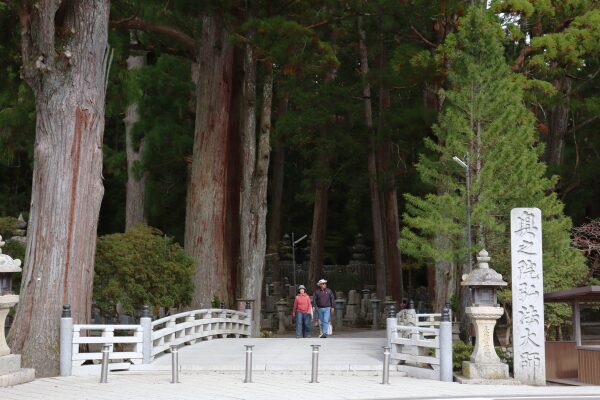
Along the path, there are many tall centuries-old cedar trees. There are also tens of thousands of graves, hoping to rest in peace near Kukai. You even can find a number of gravestones of famous people, including some famous samurai and warlords from the Sengoku Period.
However, many of those gravestones are memorial towers, meaning their body is not buried here.
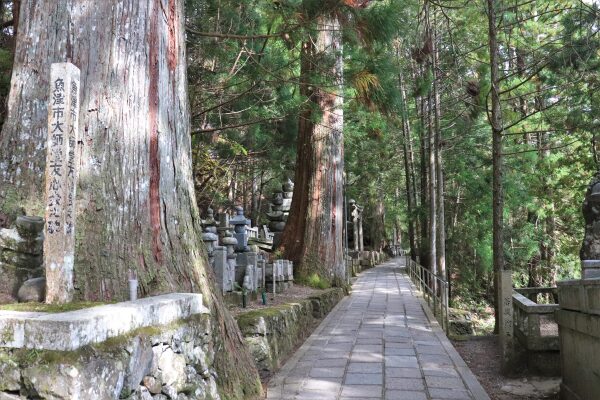
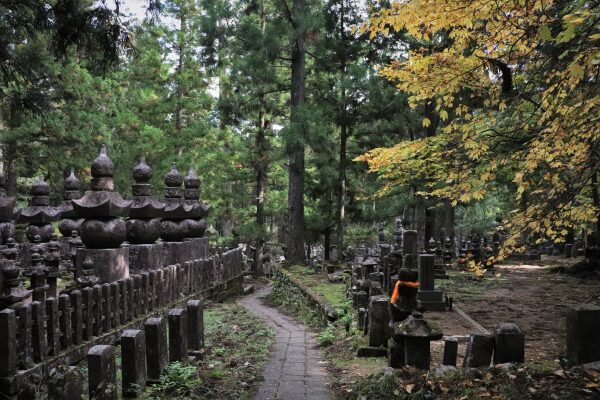
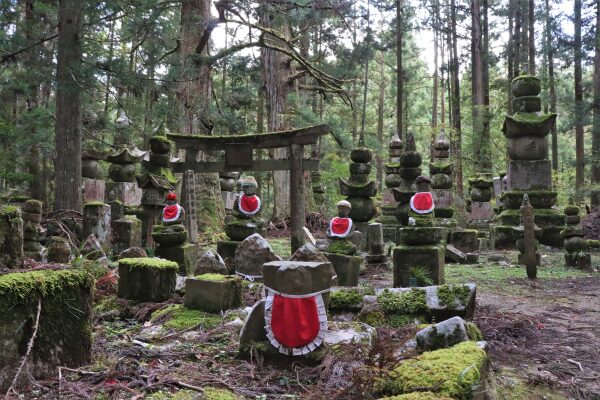
The gravestones in Okunoin are gorinto, or five-ringed tower, commonly seen in Shingon Buddhism.
Each component of the tower represents five elements of Buddhism, namely sky (jewel-shape), air (hemisphere-shape), fire (pyramid-shape), water (round-shape), and earth (box-shape).


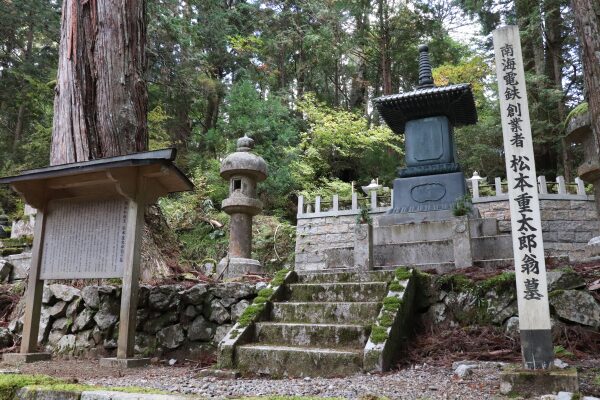
Nakanohashi
At the end of Nakanoshi Bridge is Kakuban-zaka. When you see Kakuban-zaka slope, you are almost halfway! Kakuban was a monk who once practiced at Koyasan. After Kukai passed away, Koyasan became obsolete shortly, but Kakuban tried to revive the temple. Unfortunately, he was nearly assassinated in Koyasan and built Negoro-ji Temple in Wakayama.
In this area used to be a temple called Mitsugen-do created by Kakuban, but now only this small temple commemorates it.
What is scary is that if you slip on this slope, people believe that you will die in three years.
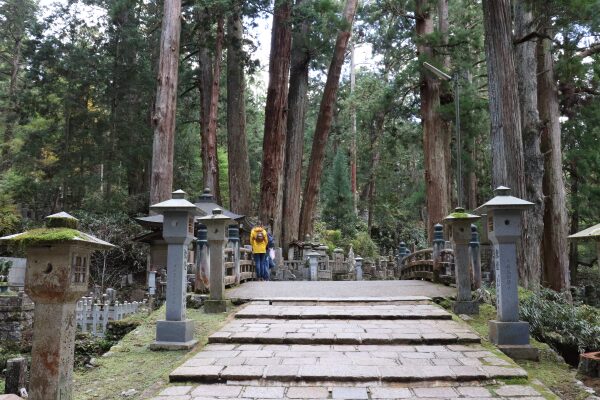
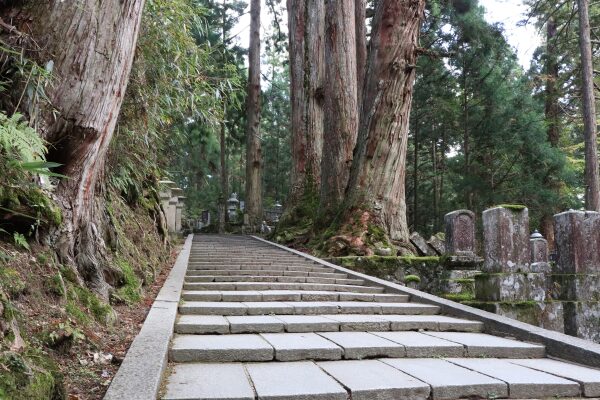
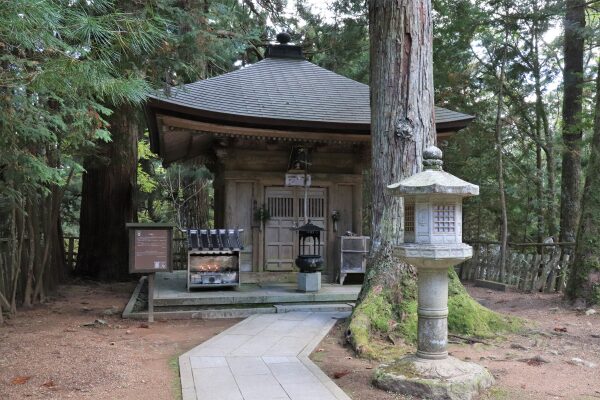
The path goes on and on with literally hundreds of gorinto and jizo standing along the path.
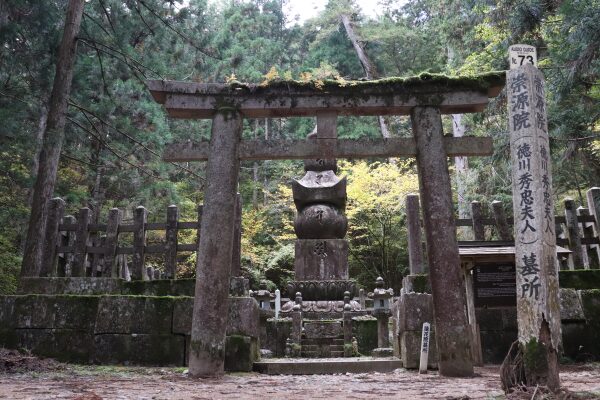
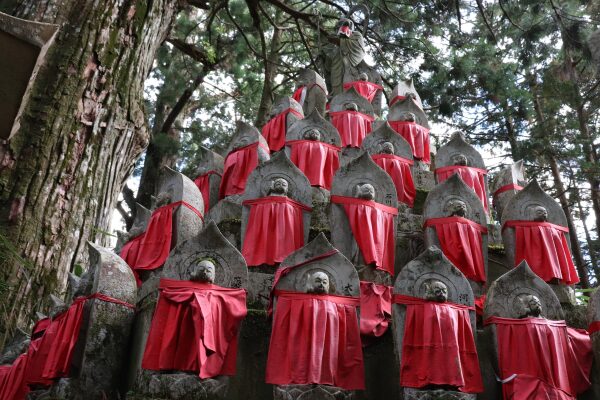
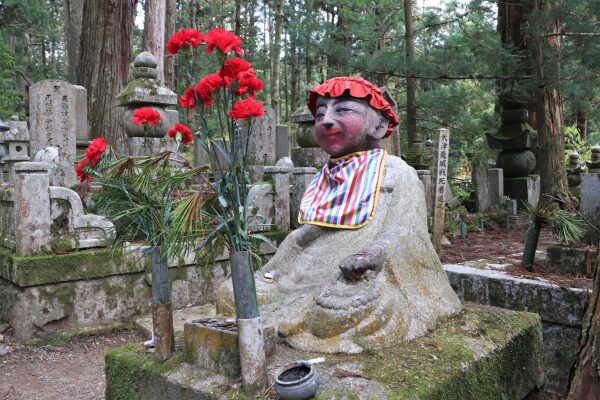
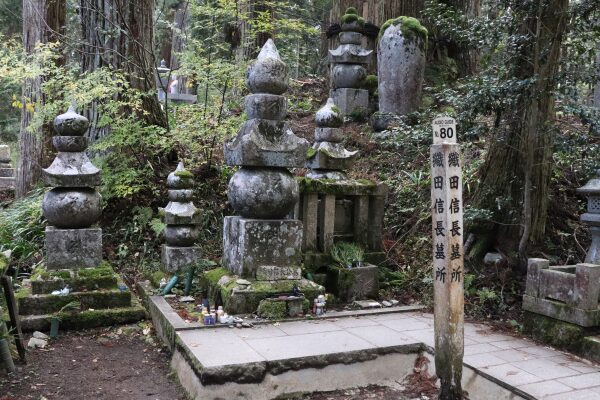
Crossing the Tamagawa
After a while, you will be at a little temple called Gokusho, where you can get a shuin. (There are bathrooms too.) During the day, there are so many people, especially tour groups. The Okunoin-mae bus stop is only a five-minute walk from here.
The path, shortly crossing Tamagawa River, further leads to Kukai’s mausoleum. However, once you cross the small Tamagawa River, the area becomes the most sacred place; thus you are not allowed to take any pictures beyond this point because it is a serious religious site.
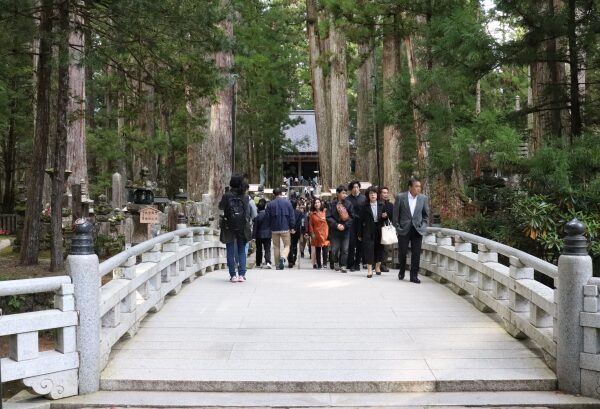
At the end of the path is the Toro-do, a building with hundreds of lanterns hung from the ceiling and a fire, that kept burning for a thousand years. It is hard to describe what it looks like in words, but surely, it is gorgeous.
Also, the reason why this place is so sacred is that this is where Kukai is still in practice. Kukai passed away in 835 in the Okunoin, However, Shingon Buddhists believe that Kukai did not pass away but went into an eternal meditation, nyujyo.
Information: Okunoin
| Address |
|
| Website |
|
| Getting To |
From the Koyasan station, take a bus to the Okunoin-mae bus stop or Ichinohashi-guchi bus stop.
|
| Hours |
365 days
|
| Admission |
Free
|
| Note |
|

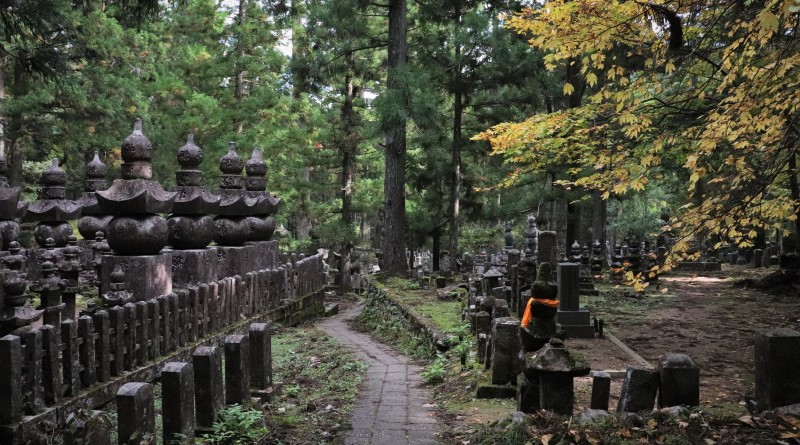
Leave a Reply